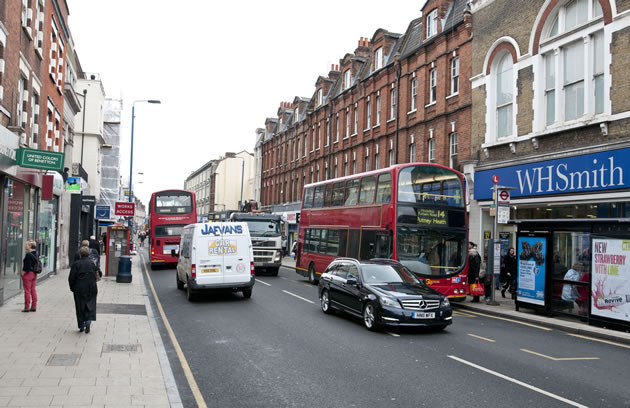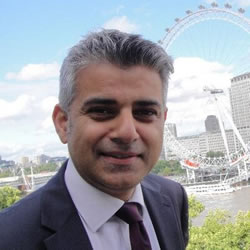Putney To Get First Green Bus Route
Bus NOx emissions could be cut by 84 per cent along 12 new ‘Low Emission Bus Zones’

Putney High Street
The Mayor of London, Sadiq Khan, today confirmed plans for the first of a series of ‘Low Emission Bus Zones’ - prioritising the greenest buses on the worst polluted routes, as part of his far-reaching plans to clean up the capital’s toxic air.
From February next year, the first route along Putney High Street - one of the capital’s worst pollution hotspots - will see exclusive use of hybrid or diesel buses with top-of-the-range anti-pollutant systems that meet or exceed Euro VI emissions standards. The second route - between Brixton and Streatham - will be converted in October 2017.
These are the first Low Emission Bus Zones the Mayor promised in his manifesto and which will all be operational by 2020. These are expected to reduce NOx emissions from buses along these routes by around 84 per cent. They will be focussed on London’s worst air quality hotspots outside central London and prioritised in areas where buses would otherwise contribute significantly to road transport emissions.
The Low Emission Bus Zones will also incorporate a number of changes to the road layout to ensure buses have priority over other traffic and are able to keep moving, cutting emissions from unnecessary idling and speeding up journey times.
Low Emission Bus Zones are one of a number of measures the Mayor has asked TfL to lead by example on to reduce emissions from the capital’s bus fleet, including:
· Making sure all buses operating in the central Ultra Low Emission Zone comply a year earlier by 2019, meaning each of the 3,100 double-deck buses operating in the zone will be Euro VI hybrid
· Expanding the ULEZ retrofit programme up to 3,000 buses outside the central zone
· Procuring only hybrid or zero-emission double-decker buses from 2018
 The Mayor of London, Sadiq Khan, said:
The Mayor of London, Sadiq Khan, said:
“It is a scandal that in a wonderful, modern world city like London, thousands of people are dying because the air they breathe is toxic. I am absolutely committed to speeding up our efforts and making sure I do everything possible to improve air quality in the capital. Too many of London’s busiest high streets are choked with fumes and this move will improve the health of those living and working in the most polluted areas. I am determined to reduce emissions and improve London for everyone, and this is the latest in a number of changes I am making to deliver on this.”
 Cllr Jonathan Cook, deputy leader of Wandsworth Council, said:
Cllr Jonathan Cook, deputy leader of Wandsworth Council, said:
“Putney High Street has seen the biggest fall in pollution levels in London thanks to investment in the bus fleet and we’re pleased our new mayor will continue to treat this road as a priority. Wandsworth Council has installed the city’s most sophisticated pollution monitoring system here so there is no better place to trial new interventions and prove they can work.”
Low Emission Bus Zones are an integral part of the Mayor’s plan to urgently clean up London’s air quality, which is a contributory factor in the deaths of around 10,000 residents each year according to the latest medical research. Plans for the Low Emission Bus Zones were announced by the Mayor in May alongside a number of proposals to improve the Capital’s air quality. Those proposals were subject to a recent consultation with nearly 15,000 responses, including:
· Extending the Ultra-Low Emission Zone (ULEZ) to the North Circular Road and the South Circular Road and the possibility of bringing forward the introduction earlier than 2020
· Implementing an extra charge on the most polluting vehicles entering central London using the Congestion Charge payment and enforcement system from 2017
· Introducing ULEZ standards for heavy vehicles London-wide from 2020
· Giving the go-ahead for TfL to start work on the costs and challenges of implementing a diesel scrappage scheme as part of a wider national scheme delivered by the Government
Leon Daniels, TfL’s Managing Director of Surface Transport, said:
“We’ve identified a number of routes where we can implement the Mayor’s Low Emission Bus Zones plan quickly and efficiently. These corridors will see quicker journeys and real lasting improvements in air quality.”
August 8, 2016